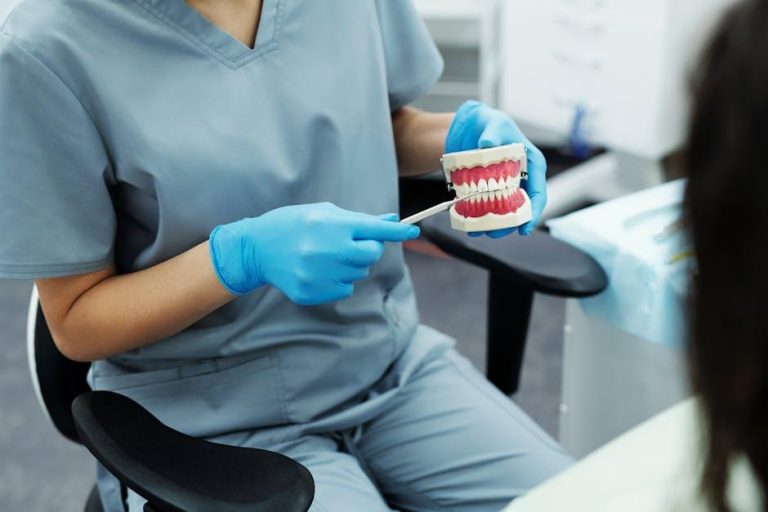
The Barriers to Oral Health Care Illustration – Centers for Medicare & Medicaid Services | CMS.gov
Access to oral health care is essential for maintaining overall well-being, yet millions of Americans face significant barriers that prevent them from receiving needed dental services. The Centers for Medicare & Medicaid Services (CMS) highlights these challenges through an insightful oral health care illustration aimed at improving awareness and driving policy changes.
Understanding the Barriers to Oral Health Care
Barriers to oral health care are multifaceted, including financial, geographic, systemic, and cultural challenges that impact individuals’ ability to obtain dental services. CMS’s oral health care illustration helps visualize these obstacles and their impact on vulnerable populations, especially Medicaid and Medicare beneficiaries.
Key Barriers Identified by CMS
- Insurance Coverage Gaps: Unlike other medical services, dental coverage is often limited or excluded under Medicare, leading many seniors to forgo care.
- Cost of Care: Out-of-pocket expenses for dental services can be prohibitively expensive, particularly for low-income families.
- Provider Availability: There is a shortage of dental providers, especially those accepting Medicaid, resulting in limited access in rural and underserved areas.
- Transportation Challenges: Geographic isolation and lack of public transportation restrict patients’ ability to visit dental offices.
- Health Literacy: Awareness about the importance of oral health and available benefits is often lacking among vulnerable groups.
- Cultural and Language Barriers: Cultural perceptions and language differences can discourage individuals from seeking dental care.
- Systemic Challenges: Integration of oral health into primary care is limited, reducing timely referrals and coordination.
The Impact of Oral Health Barriers on Americans
These barriers contribute to significant health disparities. Poor oral health is associated with chronic diseases, including diabetes, heart disease, and respiratory infections. The lack of access to dental care exacerbates these conditions and leads to unnecessary pain and suffering.
| Population Group | Main Oral Health Barrier | Consequences |
|---|---|---|
| Medicare Beneficiaries (Seniors) | Limited dental coverage | Untreated tooth decay, higher medical costs |
| Medicaid Enrollees | Provider shortages, eligibility restrictions | Delayed treatment, poor oral health outcomes |
| Rural Residents | Geographic isolation, transport issues | Lower dental visit rates, emergency care reliance |
| Cultural Minorities | Language/cultural barriers, low health literacy | Underutilization of dental services |
CMS Efforts to Overcome Oral Health Barriers
CMS actively works to reduce these barriers through policy reforms, educational campaigns, and partnerships aimed at improving oral health care access, quality, and affordability. Key CMS initiatives include:
- Expanding Dental Benefits through Medicaid: Encouraging states to broaden adult dental benefits, including preventive, restorative, and emergency services.
- Medicare Advantage Plans: Increasing plans offering dental benefits to Medicare enrollees.
- Provider Incentives: Supporting dental providers to participate in Medicaid by optimizing reimbursement rates and simplifying administrative procedures.
- Oral Health Integration: Promoting the integration of oral health screenings and education into primary care settings.
- Community-Based Outreach: Enhancing culturally appropriate education and resources for underserved populations.
Case Study: Medicaid Dental Expansion Success
In states like Colorado and California, CMS-supported Medicaid dental expansions have demonstrated measurable improvements:
- Increased dental visits among adults by up to 40% within two years.
- Reduced emergency room visits for dental pain by 15%.
- Improved early detection of oral diseases through community programs.
Practical Tips for Accessing Oral Health Care
Individuals can take several steps to overcome common barriers in oral health care:
- Review Your Coverage: Understand your Medicare or Medicaid dental benefits. Visit Medicare.gov or your state Medicaid website for details.
- Seek Low-Cost Clinics: Community health centers and dental schools often offer affordable services.
- Use Transportation Resources: Explore local transportation assistance programs available for medical visits.
- Schedule Regular Check-ups: Preventive care reduces costly treatments later.
- Ask About Language Services: Many providers offer interpreters or multilingual staff.
The Benefits of Improving Oral Health Access
When barriers to oral health care are reduced, individuals experience better outcomes, including:
- Improved quality of life and self-esteem.
- Early detection and treatment of dental conditions.
- Reduced healthcare costs due to fewer complications and ER visits.
- Enhanced overall health and reduced chronic disease risks.
- Increased productivity and fewer days lost to dental pain or illness.
Conclusion
The oral health care illustration by the Centers for Medicare & Medicaid Services sheds light on the critical barriers affecting millions of Americans, particularly those relying on Medicare and Medicaid. By understanding these obstacles, CMS and healthcare providers can design more effective policies and programs to improve access to affordable, high-quality dental care.
For individuals, staying informed about available benefits and utilizing community resources helps break down these barriers, promoting healthier smiles and better overall health.
For more information, visit the official CMS website at CMS.gov and take steps today to prioritize your oral health!


